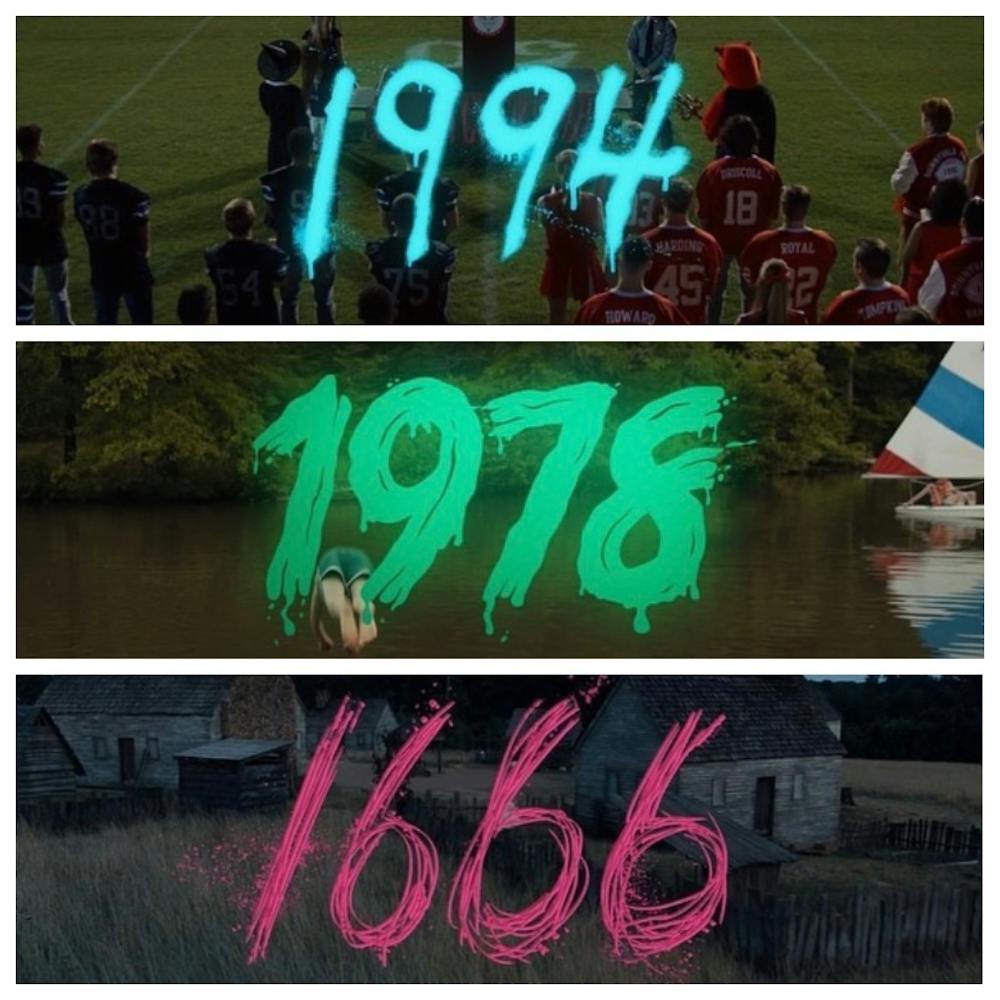Editor’s Note: The following article contains spoilers for Netflix’s “Fear Street” trilogy.
Never again do I want to watch someone’s head go through a meat grinder.
Of all the deaths in the fictitious town of Shadyside, the murder of preppy-schoolgirl-by-day, dirty-drug-dealer-by-night, Kate Schmidt, was the most gruesome to watch.
In this R.L. Stine adaptation, gory deaths are anything but uncommon. Shadyside has been plagued by an evil force for nearly three centuries, tagged “Killer capital, USA,” by fictional news outlets and “Shittyside,” by vandals on the town’s welcome sign.
Residents blame their misfortune on Sarah Fier, a woman hanged for being a witch in 1666. Legends say she placed a curse on the town and has haunted its inhabitants for more than 300 years to avenge her death.
Opposite of Shadyside is the town’s rival, Sunnyvale. The Goode family has run the clean, affluent village of Sunnyvale for years, keeping its upper class citizens well taken care of.
All three parts of the trilogy were released on Netflix in July, each film coming out one week after another. Each movie explores a year of importance for Shadyside: 1994, 1978 and 1666.
Beginning in 1994, we follow the story of Deena Johnson and Sam Fraser, lovers turned exes turned lovers again. Through a series of lies, deception and crazy killers, the pair discovers the truth about the witch Sarah Fier, which (yes I know, this is a hilarious pun) changes the fates of Shadyside and Sunnyvale forever.
Now that I’ve summarized, let me say: I hate horror movies.
I don’t invite evil into my life, and whether it’s superstitious or not, I avoid horror movies like the plague. I scare easily and I am not afraid to sleep with my light on to stave off a loose demon.
So imagine my surprise when I finished not one, not two, but three horror movies and comfortably slept with the lights off.
The film has just enough jump scares and bloody images to appease horror genre aficionados while staying behind a certain line for scaredy cats like me. Director Leigh Janiak pulls from iconic horror movies — including “Scream,” “Halloween,” and “The Witch” — and blends components of slasher films with paranormal activity to create a perfectly palatable scary movie.
Enjoy what you're reading?
Signup for our newsletter
While I rarely watch horror movies, I do spend more of my free time watching movies than I care to admit. I’ve learned that while subpar cinematography and choppy editing can disturb a movie’s success, floundering storytelling can create a box-office bomb.
In the same way that the incredibly successful “Knives Out” is filled with twists and turns around every corner, so too is Fear Street. The brilliant minds of Stine and Janiak keep audiences on their toes for nearly six hours of content. Lies and secrets are revealed meticulously and in such a way that viewers feel as if they’re crawling through the underbelly of Shadyside along with the characters.
And the characters are really what make the story worth following.
Not only can many of the cast members boast having multiple roles in the same movie (every character of which is portrayed flawlessly) but the diversity of the film is unmatched in any other horror film.
The protagonist of the story, Deena, is a queer person of color, and she’s not just a plot device.
Unlike Netflix’s other occult show, “The Chilling Adventures of Sabrina,” Fear Street’s inclusion is not forced. The plot does focus on Deena and Sam’s love (and another queer relationship), but their love is not a cheap ploy for Netflix to say they’ve made a diverse horror movie.
The subtext of queer themes is common in the horror genre, but rarely are audiences allowed to see a gay relationship drive the plot of a horror film. Unlike the queer undertones of Billy and Stu’s relationship in “Scream,” Deena and Sam’s relationship is not only front and center, but the motivating factor for the characters’ decisions.
Not to mention, Deena and her brother Josh — Black teenagers — are two of the only characters to survive Shadyside’s violence. Even when horror movies do decide to include people of color, those characters usually die the most grisly deaths.
The films were a refreshing change of pace in the straight, white Hollywood horror world.
It’s not October yet, but if you’re looking for a nice, violent slasher film to unwind with at the end of a long day of classes, you can’t go wrong with The Fear Street Trilogy.
Rating: 9/10




